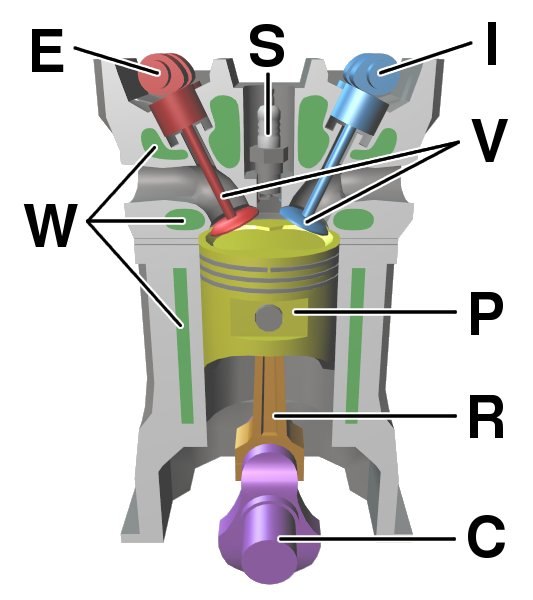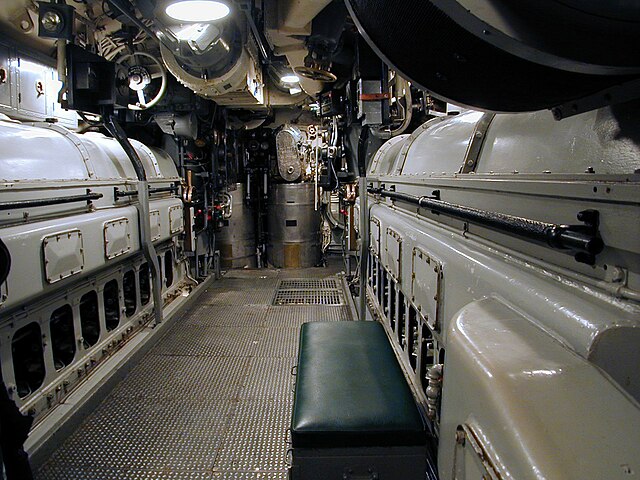An opposed-piston engine is a piston engine in which each cylinder has a piston at both ends, and no cylinder head. Petrol and diesel opposed-piston engines have been used mostly in large-scale applications such as ships, military tanks, and factories. Current manufacturers of opposed-piston engines include Cummins, Achates Power and Fairbanks-Morse Defense (FMDefense).
1932 Junkers Jumo 205 diesel aircraft engine
1898 Oechelhäuser gas engine
1900 Gobron-Brillié opposed-piston engine with overhung yoke
Fairbanks Morse 38 8-1/8 diesel engine on the USS Pampanito submarine
A reciprocating engine, also often known as a piston engine, is typically a heat engine that uses one or more reciprocating pistons to convert high temperature and high pressure into a rotating motion. This article describes the common features of all types. The main types are: the internal combustion engine, used extensively in motor vehicles; the steam engine, the mainstay of the Industrial Revolution; and the Stirling engine for niche applications. Internal combustion engines are further classified in two ways: either a spark-ignition (SI) engine, where the spark plug initiates the combustion; or a compression-ignition (CI) engine, where the air within the cylinder is compressed, thus heating it, so that the heated air ignites fuel that is injected then or earlier.

Internal combustion piston engine Components of a typical, four-stroke cycle, internal combustion, gasoline piston engine. C. Crankshaft E. Exhaust camshaft I. Intake camshaft P. Piston R. Connecting rod S. Spark plug W. Water jacket for coolant flow V. Valves
Ray-traced image of a piston engine






